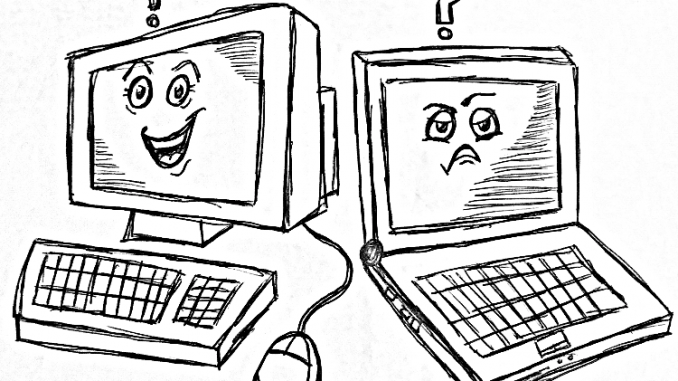

During my senior year of high school, I took an online Advanced Placement Economics class that I still consider one of my least favorite classes I’ve ever taken.
Communication with my classmates and teacher was incredibly minimal. In fact, I only ever heard my teacher’s voice in the pre-recorded audio lectures. This class resulted in my worst final grade of my high school career.
I swore to myself I’d never take another online class. But because of the way the education system is evolving, with more and more classes being offered online, it seems I’ll likely have to take another sometime during my undergraduate or graduate studies. And as a future teacher, I may even have to teach an online class one day.
As I start another semester on Main Campus, I hear lots of my classmates talking excitedly about the freedom of taking online classes. They mention listening to lectures in bed and that online classes promote a flexible schedule. Some even say they wish every course were offered online.
But still, the push for more online classes is damaging. Online learning is not for everyone. And students filling their schedules with online courses should reconsider, simply because it strips the important social aspect of college classes and hinders education in the long run.
A 2015 survey conducted by the Babson Survey Research Group at Babson College found that more than one in four students were enrolled in an online course. I find that disappointing. The progression of technology is a good thing, but not when it demotes human interaction and promotes a lax approach to education.
While the online class I took was in high school, Temple University students in online classes have experienced some of the same issues. These flaws seem to be universal across the idea of online learning.
Online classes usually don’t include face-to-face interaction. The economics course I took in high school was limited to discussion boards and “office hours” that students with crowded schedules could rarely attend.
Jenna Tieu, a junior accounting major, said she experienced a lack of communication in an online math course.
“My professor wasn’t there in an online presence most of the time,” Tieu said. “In an in-person class, you can stop the teacher whenever and just ask a question right then and there, but in an online class you’ll be emailing and waiting all day, or sometimes not even get a response at all.”
We’ve all been there: confused about an assignment, frustrated with Canvas or concerned about whether a topic will be on the exam. But what happens when you can’t get an answer to a burning question the moment you need it?
A guessing game — or worse, a failing grade — is what happens.
The Brookings Institution, a public policy nonprofit, found that college students in online courses were more likely to do worse in future courses than their peers learning in traditional classrooms. I worry this could lead to higher dropout rates.
Online classes might appeal to many students, and virtually anyone can enroll. But this can be problematic because students who are bad at being prepared for class simply don’t do well in online classes, according to research conducted by professors at Harvard and Stanford universities. These classes are truly not made for everyone.
And students aren’t the only ones who are realizing the downside to online classes. Some professors are even trying to reform the system on their own.
Melissa Toomey, an English professor, teaches Analytical Reading and Writing online at Temple. She said while she’s optimistic about the benefits that online learning can provide to students who prefer it, she also sees the inconveniences that online classes can create for both students and professors.
“The challenge is finding that multimodality, trying to figure out how to integrate audio and video and thinking about what students are interested in, like music in the background while I’m explaining a lecture,” Toomey said. “Finding ways to connect to students in this way is a lot more preparation. … It requires at least 20 extra hours of prep work.”
The convenience of online classes doesn’t outweigh the frustration studentstheand teachers face when taking or teaching them. My advice to students would be to look past the earlier alarm clocks and the burden of getting out of your pajamas. Physically showing up to class is worth it in the long run.



Be the first to comment